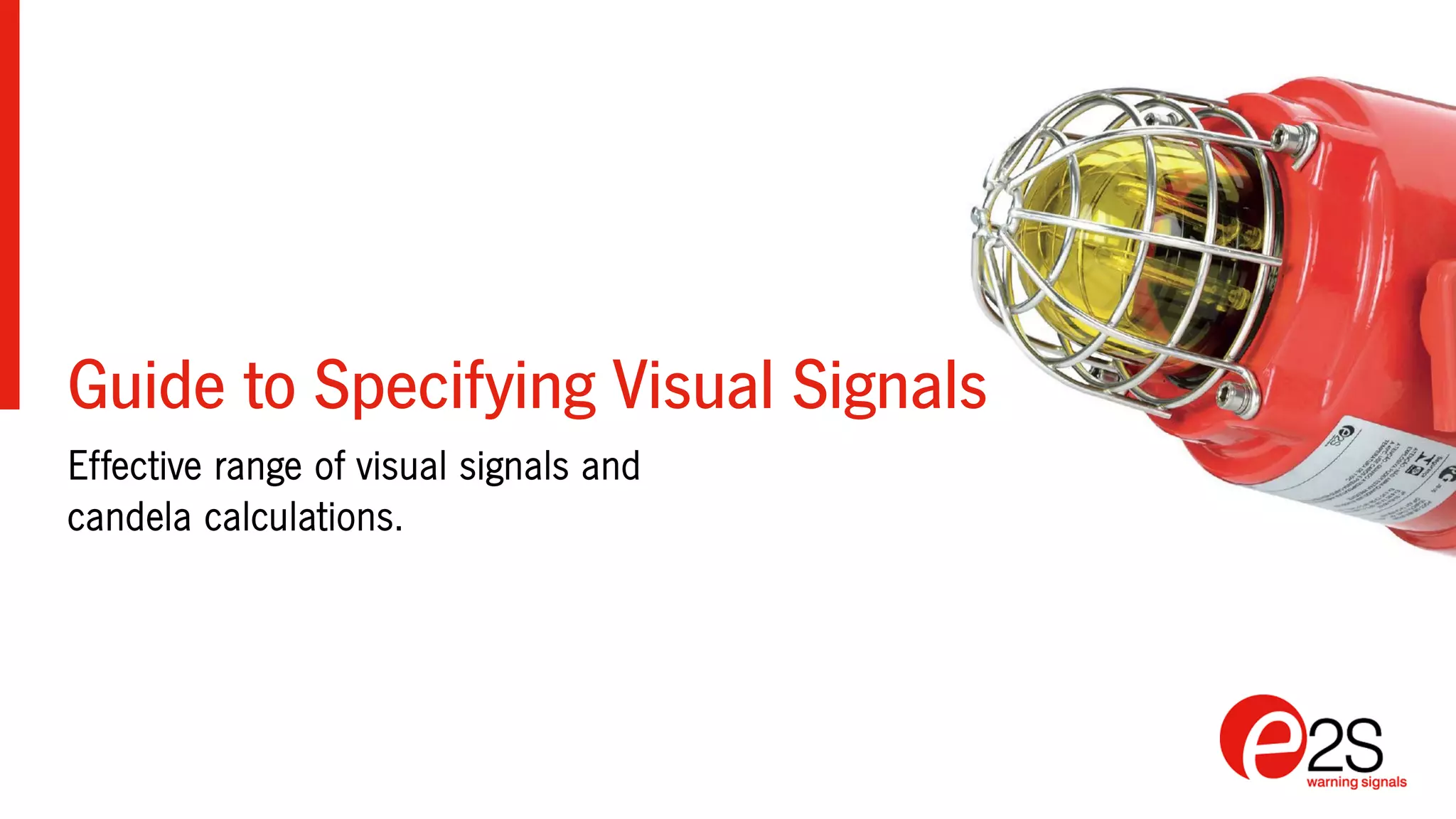This document provides guidance on visual signals, including their effective range and calculations of light output in candela. It discusses the purpose of visual signals to attract attention, unlike general lighting. The effectiveness of a signal depends on its ability to attract attention, particularly when flashing. Measurements of light output are more meaningful than calculations alone. Different light sources for visual signals are examined, including incandescent bulbs, halogen bulbs, xenon tubes, and LEDs. The document also provides the formula for calculating light output in candela and estimating the effective range of a visual signal based on its measured light output.




















